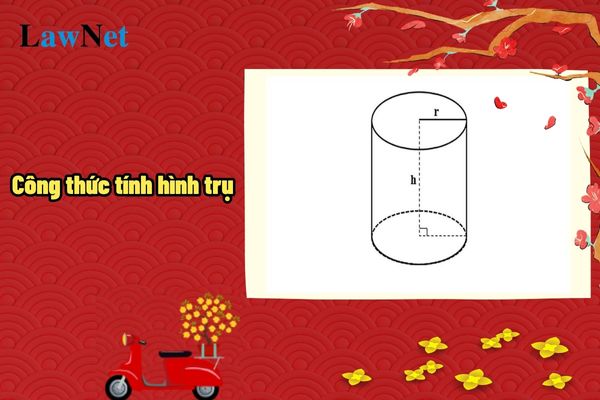What are the mathematical formulas related to a cylinder? What is the grade at which students in Vietnam will learn the mathematical formulas related to a cylinder in the Mathematics curriculum?
What are the mathematical formulas related to a cylinder?
A cylinder is a three-dimensional solid created when a rectangle revolves around a fixed edge. The cylinder has two bases which are two equal parallel circles.
|
What are the mathematical formulas related to a cylinder? Elements of a cylinder |
*Note: The information is for reference only./.

What are the mathematical formulas related to a cylinder? What is the grade at which students in Vietnam will learn the mathematical formulas related to a cylinder in the Mathematics curriculum? (Image from the Internet)
What is the grade at which students in Vietnam will learn the mathematical formulas related to a cylinder in the Mathematics curriculum?
The formula for calculating the volume of a cylinder is among the topics that 9th-grade students will learn. Under Section 5, Appendix of the General Education Program for Mathematics issued together with Circular 32/2018/TT-BGDDT:
Specifically, in the section on Visual Geometry, the lesson about cylinders, cones, and spheres will cover content such as:
- Describing (generatrix, height, base radius) and constructing a cylinder.
- Describing (vertex, generatrix, height, base radius) and constructing a cone.
- Describing (center, radius) and constructing a sphere, identifying the intersection of a plane and a sphere.
- Calculating the lateral surface area of cylinders, cones, and the spherical surface area.
- Calculating the volume of a cylinder, cone, or sphere.
- Solving practical problems related to calculating the lateral surface area, volume of cylinders, cones, spheres (e.g., calculating the volume or lateral surface area of common items shaped like a cylinder, cone, sphere, etc.).
Thus, the formula for calculating the volume of a cylinder is taught in the 9th-grade Mathematics curriculum.
Must the 9th-grade Mathematics curriculum ensure the integration of various subjects?
Under Section 2 of the General Education Program for Mathematics, issued together with Circular 32/2018/TT-BGDDT regarding the perspectives on developing the mathematics curriculum in general:
I. Perspectives on developing the mathematics curriculum
The mathematics curriculum adheres to the basic regulations outlined in the overall program; it builds on, and promotes the strengths of, the existing program and previous programs, selectively incorporating the curriculum construction experiences of advanced countries worldwide, integrating educational science achievements, considering Vietnam's economic and social conditions. Simultaneously, the mathematics curriculum emphasizes several perspectives:
- Ensuring simplification, practicality, modernity
The mathematics curriculum ensures simplification, practicality, and modernity by reflecting essential content that must be addressed in schools, meeting the needs for world understanding as well as learners' interests and preferences, aligning with current global approaches. The program embodies the spirit "mathematics for everyone," making it accessible to all, allowing each person to learn mathematics in a way that suits their individual interests and abilities.
The mathematics curriculum emphasizes application, integration with other subjects, and educational activities, especially with subjects aimed at STEM education enforcement, aligning with modern development trends in economics, science, societal life, and pressing global issues (such as climate change, sustainable development, financial education, etc.).
- This is also reflected through practical activities and experiences in mathematical education with various forms such as implementing topics, learning projects on Mathematics, particularly those related to mathematical applications in practice; organizing math games, math clubs, forums, workshops, math competitions, etc., creating opportunities for students to creatively apply their knowledge, skills, and experiences in real-life situations.
Thus, under the regulations, the 9th-grade mathematics curriculum must ensure the integration of subjects to realize STEM education through specific curriculum development.

